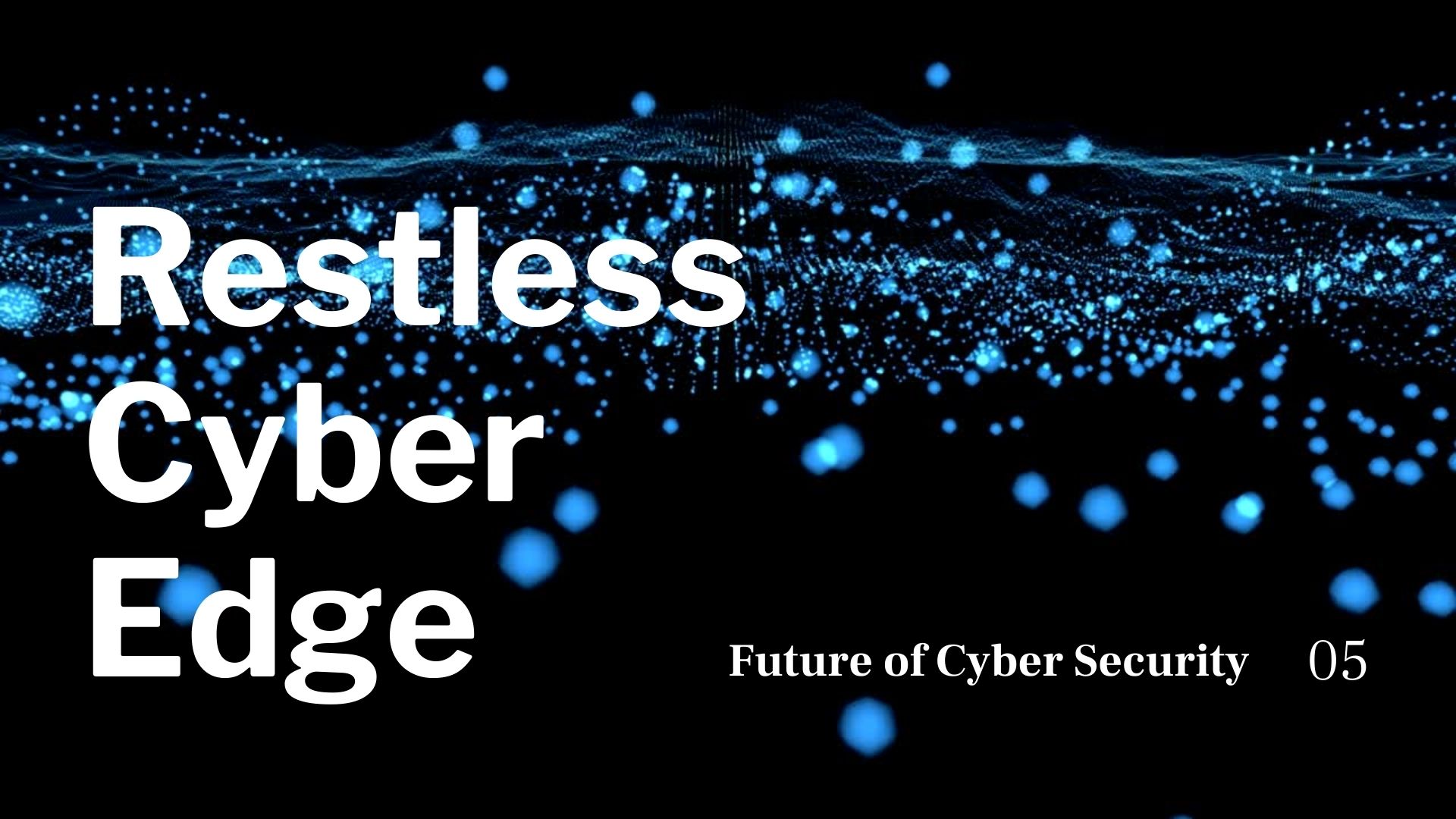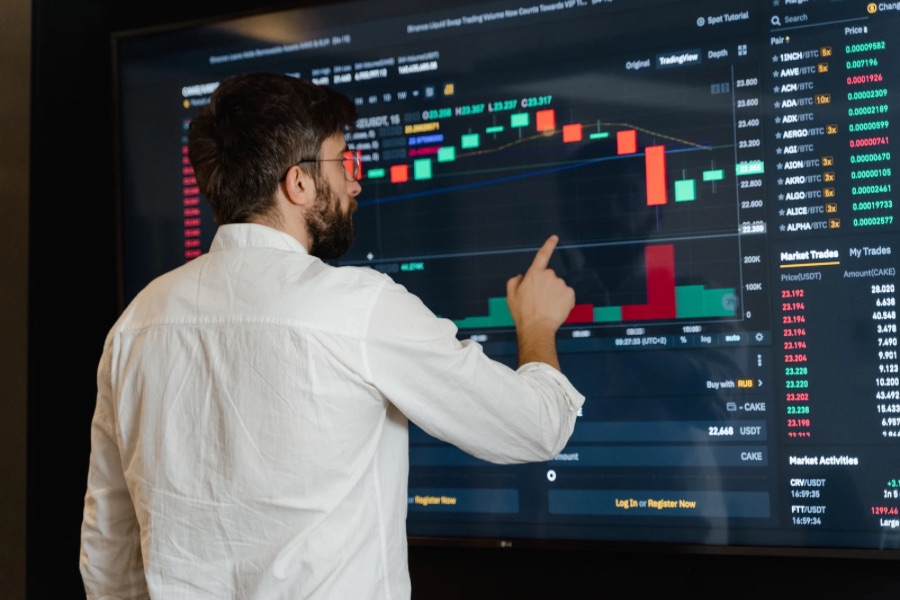Why AI-Powered Cyberattacks Will Be the Top Concern for Executives in 2026
December 18, 2024, 18 min read
In recent years, the landscape of cybersecurity has undergone a dramatic transformation. AI-powered cyberattacks emerged as a formidable threat to organizations across all sectors. As we approach 2025, these sophisticated attacks are poised to become the primary concern for executives worldwide. The alarming surge in AI-driven malicious activities has caught the attention of business leaders and cybersecurity experts alike. This then prompted a reevaluation of traditional security measures and strategies.
The rapid evolution of artificial intelligence technologies has ushered in a new era of cyber threats. This era is characterized by unprecedented levels of sophistication and adaptability. AI-powered cyberattacks leverage advanced machine learning algorithms and neural networks to circumvent conventional security protocols. This makes them increasingly difficult to detect and mitigate. This paradigm shift like cyber threats has sent shockwaves through the business community. It compelled organizations to reassess their cybersecurity posture and allocate substantial resources to bolster their defenses.
The growing concern among executives is not unfounded, as the potential impact of these AI-driven attacks extends far beyond financial losses. The repercussions of a successful AI-powered cyberattack can be devastating. They can range from severe reputational damage and loss of customer trust to regulatory penalties and legal liabilities. Moreover, the ability of AI-driven malware to learn and adapt in real-time poses a challenge to traditional incident response strategies.
As we move closer to 2025, the sophistication of AI-powered cyberattacks is expected to reach new heights. Heights that include adversaries leveraging technologies such as deep learning and generative AI to create complex and targeted attack vectors. This escalation in the capabilities of AI-driven threats will likely outpace the development of conventional security measures. Eventually it will create a widening gap between offensive and defensive capabilities in the cybersecurity landscape.
The implications of this trend are far-reaching, affecting organizations across various industries and geographies. No sector is immune to the looming threat of AI-powered cyberattacks. This universal vulnerability has prompted executives to prioritize cybersecurity initiatives and invest in next-generation defense mechanisms. These mechanisms are capable of countering these intelligent threats.
As the threat landscape continues to evolve, executives increasingly recognize the need for a holistic approach to cybersecurity beyond traditional perimeter defenses. This includes embracing AI-driven security solutions, fostering a culture of cybersecurity awareness throughout their organizations. Not only that but also actively participating in industry-wide collaborations to share threat intelligence and best practices. The race to stay ahead of AI-powered cyberattacks has become a top priority for business leaders.
The Rise of AI-Powered Cyber Threats
Integrating artificial intelligence into cyberattacks has significantly amplified their potency and reach. AI-powered cyberattacks leverage machine learning algorithms and advanced data processing capabilities to identify vulnerabilities, adapt to defense mechanisms, and execute highly targeted assaults. This evolution in attack methodologies has rendered many conventional security protocols obsolete, leaving organizations scrambling to fortify their digital infrastructures.
The emergence of AI-powered cyberattacks represents a paradigm shift in the cybersecurity landscape. These sophisticated threats are characterized by their ability to learn and evolve in real time. This makes them far more challenging to detect and mitigate than traditional cyberattacks. By harnessing the power of artificial intelligence, malicious actors can now automate identifying and exploiting vulnerabilities across vast networks. In the end it significantly increasing the speed and scale of their attacks.
One of the most concerning aspects of AI-powered cyberattacks is their capacity to analyze and mimic legitimate network behavior. This allows them to blend seamlessly into standard traffic patterns, evading detection by conventional security measures. Moreover, these AI-driven threats can rapidly adapt to new security patches and updates. It finds novel ways to bypass defenses almost as quickly as they are implemented.
The rise of AI-powered cyberattacks has also led to the development of more sophisticated social engineering techniques. AI algorithms can now analyze vast amounts of personal data gleaned from various sources to create highly personalized and convincing phishing attacks. These tailored approaches significantly increase the likelihood of success as they exploit specific vulnerabilities and preferences of individual targets.
Furthermore, the automation capabilities of AI have enabled attackers to launch large-scale, coordinated attacks across multiple vectors simultaneously. This overwhelming approach can quickly overwhelm an organization’s defenses, creating diversions that allow attackers to focus on their primary objectives while security teams are distracted by decoy incidents.
As AI-powered cyberattacks continue to evolve, they are becoming more accessible to a broader range of threat actors. The proliferation of AI tools and services has lowered the barrier to entry for conducting sophisticated cyberattacks. It enables even less skilled individuals to launch potent assaults. This democratization of advanced attack capabilities poses a significant challenge to organizations of all sizes. They must now contend with a broader and more diverse threat landscape.
The Rising Cybersecurity Crisis for SMBs
Small-to-medium-sized businesses (SMBs) are at the center of an escalating cybersecurity crisis. According to the latest Microsoft Security report, cybercriminals are increasingly targeting SMBs, revealing significant vulnerabilities within this sector.
Here’s what the numbers tell us:
- 1 in 3 SMBs (businesses with 25-299 employees) experienced cyberattacks in the past year.
- The average cost of a single attack stands at a staggering $255,000, with some businesses facing damages as high as $7 million.
Why SMBs Are Prime Targets
Unlike large enterprises, SMBs often lack the resources and expertise required to combat sophisticated cyber threats. Some key reasons for their vulnerability include:
- Limited Internal IT Expertise
Many SMBs do not have dedicated IT teams capable of identifying and responding to threats in real time.
- Inadequate Cybersecurity Tools
Outdated or insufficient security measures leave SMBs exposed to attacks such as phishing, ransomware, and data breaches.
- Hybrid Work Challenges
Personal device use and unsecured networks in hybrid work setups have created additional entry points for attackers.
The Financial Impact
The financial toll of cyberattacks on SMBs is devastating:
- Direct costs: Recovery expenses, fines, and lost revenue.
- Indirect costs: Damage to reputation, loss of customer trust, and decreased market competitiveness.
Hope on the Horizon: Increased Cybersecurity Investment
The good news is that 80% of SMBs plan to increase their cybersecurity budgets. Focus areas include:
- Data Protection: Encrypting sensitive customer and business data.
- Phishing Prevention: Educating employees to recognize and report suspicious emails.
- Ransomware Defense: Implementing advanced tools to detect and mitigate ransomware threats.
Cybersecurity: A Business Imperative
For SMBs, cybersecurity is no longer just an IT issue; it’s a critical component of long-term business resilience. Proactively investing in robust security solutions can save companies from catastrophic financial and reputational losses.
Gartner’s Alarming Findings
A recent study conducted by Gartner has shed light on the growing apprehension among business leaders regarding AI-powered cyberattacks. The research revealed that 80% of executives consider AI-enhanced malicious attacks the top risk facing their businesses. This widespread concern underscores the urgent need for organizations to prioritize and invest in advanced cybersecurity measures capable of countering these intelligent threats.
The Gartner study, provides crucial insights into the changing landscape of cybersecurity threats. The high percentage of executives identifying AI-powered cyberattacks as their primary concern reflects a significant shift in the perception of digital risks. This shift is primarily attributed to the rapid advancements in AI technology and its potential for misuse by malicious actors.
The research also highlighted that traditional cybersecurity measures are increasingly considered inadequate in the face of these evolving threats. Many respondents doubted their organization’s ability to detect and respond to sophisticated AI-driven attacks effectively. This realization has sparked a sense of urgency among business leaders to reevaluate and enhance their cybersecurity strategies.
Furthermore, the Gartner study revealed that the concern over AI-powered cyberattacks extends beyond immediate security risks. Executives are also worried about the potential long-term impacts on their businesses, including reputational damage, financial losses, and erosion of customer trust. The study found that many leaders consider cybersecurity a critical component of their overall business strategy rather than just an IT issue.
The research also explored the challenges organizations face in addressing this emerging threat. Many respondents cited a lack of expertise in AI and machine learning within their cybersecurity teams as a significant obstacle. This skills gap is compelling many companies to invest heavily in training programs and specialized talent recruitment to bolster their defenses against AI-powered cyberattacks.
Gartner’s findings also indicate a growing trend towards increased collaboration between businesses and cybersecurity firms. Many executives expressed interest in partnering with external experts to develop more robust defense mechanisms against AI-driven threats. This collaborative approach is essential for staying ahead of the rapidly evolving tactics employed by cybercriminals leveraging AI technologies.
Retail Sector Under Siege
The retail industry has emerged as a prime target for AI-powered cyberattacks, with alarming statistics highlighting the scale of the problem. According to Imperva Threat Research, from April to September 2024, an average of 569,884 AI-driven attacks were recorded daily, specifically targeting retail sites. This staggering figure emphasizes the relentless nature of these attacks and the vulnerability of e-commerce platforms to sophisticated AI-driven threats.
The retail sector’s vulnerability stems from its vast digital footprint and the wealth of sensitive customer data it processes daily. AI-powered cyberattacks targeting this industry are particularly concerning due to the potential for widespread financial and reputational damage. These attacks often exploit weaknesses in payment systems, customer databases, and supply chain management software.
One of the primary reasons why retail has become a favored target for AI-powered cyberattacks is the industry’s rapid digital transformation. As more retailers embrace e-commerce platforms and omnichannel strategies, they inadvertently expand their attack surface. AI-driven malware can scan these complex digital ecosystems autonomously, identifying and exploiting vulnerabilities faster than human cybersecurity teams can patch them.
The sophistication of these attacks is particularly troubling. AI-powered cyberattacks targeting retail often employ advanced techniques such as deep learning to mimic legitimate user behavior, making them incredibly difficult to detect. These AI systems can analyze vast amounts of data to identify patterns in customer behavior, allowing attackers to create compelling phishing schemes or execute precise timing attacks during peak shopping periods.
Moreover, the retail sector’s reliance on third-party vendors and complex supply chains provides additional entry points for AI-powered cyberattacks. Malicious AI can navigate through interconnected systems, potentially compromising entire networks of retailers and their partners. This cascade effect can lead to widespread data breaches, simultaneously affecting millions of customers across multiple brands.
The financial implications of these attacks are substantial. Beyond the immediate costs of addressing breaches and compensating affected customers, retailers face long-term consequences such as loss of consumer trust and potential regulatory fines. As AI-powered cyberattacks become more prevalent, the retail industry must invest heavily in advanced cybersecurity measures to protect its digital assets and customer data.
To combat this growing threat, retailers are beginning to adopt AI-driven defense mechanisms of their own. These systems use machine learning algorithms to analyze network traffic in real time, identifying and neutralizing potential threats before they can cause significant damage. However, the rapid evolution of AI-powered cyberattacks means that retailers must constantly update and refine their defensive strategies to stay ahead of increasingly sophisticated adversaries.
The Evolving Threat Landscape
As we approach 2025, the threat landscape continues to evolve at an unprecedented pace. AI-powered cyberattacks are becoming increasingly autonomous, capable of launching complex, multi-vector assaults that can overwhelm traditional security systems. These attacks can rapidly analyze vast amounts of data, identify patterns, and exploit vulnerabilities across multiple layers of an organization’s digital infrastructure.
The increasing sophistication and adaptability of AI-powered cyberattacks characterize the evolution of the cybersecurity threat landscape. These advanced threats are no longer confined to simple, predictable patterns but have evolved into dynamic and intelligent entities capable of learning and adapting in real time. As AI technologies advance, attackers leverage these capabilities to create more potent and evasive attack methodologies.
One of the most significant developments in the evolving threat landscape is the emergence of AI-powered self-modifying malware. These malicious programs can alter their code and behavior based on the environment they encounter, making them extremely difficult to detect and neutralize. Furthermore, AI-powered cyberattacks can now orchestrate coordinated assaults across multiple attack vectors simultaneously, overwhelming defenders and increasing the likelihood of a successful breach.
The threat landscape also shifts towards more targeted and personalized attacks. AI algorithms can sift through vast amounts of data, to create compelling phishing campaigns and social engineering attacks. These data’s include social media and public records, and they are tailored to specific individuals or organizations. This level of personalization significantly increases the success rate of these attacks. Because they become increasingly difficult for humans and traditional security systems to distinguish from legitimate communications.
Another concerning trend in the evolving threat landscape is the democratization of advanced attack tools. As AI technologies become more accessible, cybercriminals with limited technical expertise can leverage sophisticated attack frameworks and platforms. This democratization has led to a surge in the volume and variety of AI-powered cyberattacks, further complicating the task of defenders in keeping up with the rapidly changing threat landscape.
The interconnected nature of modern digital ecosystems has also expanded the attack surface for AI-powered cyberattacks. With the proliferation of Internet of Things (IoT) devices, cloud services, and interconnected supply chains, attackers now have many entry points to exploit. AI-driven threats can navigate these complex networks, identifying the weakest links and propagating across systems quickly and efficiently.
Challenges in Detection and Prevention
One of the key challenges in combating AI-powered cyberattacks lies in their ability to evade detection. Traditional signature-based security solutions are often ineffective against these adaptive threats, which can mutate and disguise their presence. As a result, organizations are finding it increasingly difficult to identify and neutralize these attacks before they cause significant damage.
The sophistication of AI-powered cyberattacks presents a multitude of obstacles for cybersecurity professionals. These attacks can dynamically alter their patterns, making it challenging for conventional security systems to recognize and respond effectively. Moreover, AI-driven malware can learn from failed attempts, continuously evolving to bypass detection mechanisms and exploit new vulnerabilities.
Another significant challenge is the speed at which AI-powered cyberattacks can operate. These attacks can analyze and exploit vulnerabilities at a pace that far exceeds human capabilities, often overwhelming security teams and automated defense systems. The rapid nature of these attacks leaves organizations with minimal time to react and implement countermeasures, increasing the likelihood of successful breaches.
Furthermore, AI-powered cyberattacks can generate compelling phishing emails, social engineering tactics, and deepfake content, making it increasingly difficult for humans and machines to distinguish between legitimate and malicious activities. This blurring of lines between real and fake poses a significant challenge in terms of user education and awareness and in developing effective detection algorithms.
The ability of AI-driven attacks to conduct thorough reconnaissance and gather vast amounts of data about their targets also complicates detection efforts. These attacks can patiently collect information over extended periods, building comprehensive profiles of organizations and their vulnerabilities before launching a coordinated assault. This level of preparation makes it challenging for security teams to anticipate and preemptively defend against such well-planned attacks.
Additionally, using AI in cyberattacks introduces new complexities in attribution and forensic analysis. The autonomous nature of these attacks, combined with their ability to obfuscate their origins, makes it increasingly difficult for organizations and law enforcement agencies to trace the source of the attack and hold perpetrators accountable. This lack of clear attribution can hinder both prevention strategies and legal recourse.
The Need for AI-Driven Defense Strategies
Organizations must adopt equally sophisticated defense strategies to counter the rising threat of AI-powered cyberattacks. Implementing AI-driven security solutions that can proactively identify, analyze, and respond to emerging threats in real time is becoming crucial. These advanced systems can leverage machine learning algorithms to detect anomalies. They can also predict potential attack vectors, and automate incident response processes.
The integration of AI-driven defense strategies represents a paradigm shift in cybersecurity. Traditional security measures are increasingly ineffective against the dynamic nature of AI-powered cyberattacks. By harnessing the power of artificial intelligence and machine learning, organizations can create adaptive defense mechanisms that evolve alongside emerging threats.
One key advantage of AI-driven defense strategies is their ability to process and analyze vast amounts of data at unprecedented speeds. This capability allows security systems to identify subtle patterns and correlations that might escape human analysts, enabling the detection of sophisticated attack techniques employed by AI-powered adversaries. Moreover, these intelligent defense systems can continuously learn from new threat data, improving their accuracy and effectiveness.
Another critical aspect of AI-driven defense strategies is their capacity for autonomous decision-making and rapid response. In the face of AI-powered cyberattacks that can execute complex maneuvers in milliseconds, human intervention alone is often too slow to prevent damage. AI-powered defense systems can autonomously implement countermeasures, isolate compromised systems, and mitigate real-time threats, significantly reducing an attack’s potential impact.
Organizations implementing AI-driven defense strategies should focus on developing comprehensive, multi-layered security architectures. This approach integrates AI capabilities across various security functions, including network monitoring, endpoint protection, threat intelligence, and incident response. Organizations can establish a more robust and resilient defense posture against increasingly sophisticated cyber threats by creating a cohesive ecosystem of AI-powered security tools.
It’s important to note that while AI-driven defense strategies offer potent capabilities, they should not be viewed as a silver bullet. Human expertise remains crucial in guiding these advanced security systems’ development, deployment, and ongoing management. Cybersecurity professionals must work with AI technologies, leveraging their unique strengths to create a synergistic approach to defending against AI-powered cyberattacks.
Investing in Cybersecurity Talent
As AI-powered cyberattacks become more prevalent, the demand for skilled cybersecurity professionals with AI and machine learning expertise is skyrocketing. Organizations must prioritize recruiting, training, and retaining talent capable of developing and managing advanced security systems. This investment in human capital is essential for staying ahead of the evolving threat landscape.
The rapid advancement of AI-powered cyberattacks has created a significant skills gap in the cybersecurity industry. Traditional IT security professionals often lack the specialized knowledge to combat these sophisticated threats effectively. To bridge this gap, companies must invest heavily in upskilling their existing workforce and attracting new talent with expertise in artificial intelligence, machine learning, and data analytics.
Recruiting top-tier cybersecurity talent has become increasingly competitive, with organizations across various industries vying for a limited pool of qualified professionals. To attract and retain the best talent, companies must offer competitive salaries, ongoing professional development opportunities, and a challenging work environment that allows for innovation and growth. Additionally, fostering partnerships with universities and technical institutions can help create a pipeline of skilled graduates ready to tackle the challenges posed by AI-powered cyberattacks.
Continuous training and education are crucial in the rapidly evolving field of AI-driven cybersecurity. Organizations should implement comprehensive training programs that keep their cybersecurity teams up-to-date with the latest trends, techniques, and technologies used in AI-powered cyberattacks. This may include regular workshops, seminars, and hands-on exercises that simulate real-world attack scenarios, allowing security professionals to hone their skills and stay one step ahead of potential threats.
Investing in cybersecurity talent also involves creating specialized roles within the organization. As AI-powered cyberattacks become more sophisticated, there is a growing need for AI security specialists, threat intelligence analysts, and machine learning engineers dedicated to cybersecurity. These specialized roles can focus on developing and implementing advanced defense strategies tailored to combat AI-driven threats.
Furthermore, organizations should foster a culture of collaboration and knowledge-sharing among their cybersecurity teams. Encouraging cross-functional cooperation and establishing mentorship programs can help disseminate expertise across the organization, ensuring the entire security team is equipped to handle the challenges posed by AI-powered cyberattacks. This collaborative approach enhances the overall security posture and contributes to employee satisfaction and retention.
Collaboration and Information Sharing
Combating the threat of AI-powered cyberattacks requires a collaborative approach. Organizations across industries must foster partnerships and establish information-sharing networks to strengthen their defenses collectively. Businesses can create a more robust and resilient cybersecurity ecosystem by pooling resources, sharing threat intelligence, and exchanging best practices.
The complexity and sophistication of AI-powered cyberattacks necessitate a united front among organizations. No single entity can effectively combat these threats in isolation. Companies can leverage their collective expertise and resources to develop more comprehensive defense strategies by forming alliances and consortiums. These collaborations can take various forms, such as industry-specific working groups, cross-sector partnerships, or even global initiatives that transcend geographical boundaries.
One of the key benefits of collaboration is the rapid dissemination of threat intelligence. When an organization detects a new type of AI-powered cyberattack, sharing this information with others can help prevent similar attacks from succeeding elsewhere. This real-time threat data sharing enables businesses to stay ahead of emerging risks and adapt their defenses proactively. Moreover, collaborative platforms can facilitate the exchange of anonymized attack data, allowing for the development of more accurate predictive models and improved threat detection algorithms.
In addition to sharing information, collaboration can lead to the development of shared resources and tools. For instance, organizations can pool their efforts to create open-source security software, contribute to threat databases, or jointly fund research into advanced defense mechanisms against AI-powered cyberattacks. This collective approach not only distributes the cost of cybersecurity initiatives but also accelerates the pace of innovation in the field.
Furthermore, collaboration extends beyond the private sector. Partnerships between businesses, government agencies, and academic institutions can foster a holistic approach to cybersecurity. These multi-stakeholder initiatives can help align research efforts with real-world needs, inform policy decisions, and ensure that the latest advancements in AI security are quickly translated into practical defenses against evolving threats.
Regulatory and Ethical Considerations
As the prevalence of AI-powered cyberattacks grows, so does the need for updated regulatory frameworks and ethical guidelines. Policymakers and industry leaders must work together to establish clear standards for developing and deploying AI technologies in both offensive and defensive cybersecurity applications. These regulations should strike a balance between fostering innovation and mitigating potential risks.
The rapid advancement of AI technologies in cybersecurity has outpaced existing regulatory frameworks, creating a pressing need for comprehensive and adaptable guidelines. These regulations must address the unique challenges posed by AI-powered cyberattacks, including accountability, transparency, and the potential for unintended consequences. For instance, regulations may need to define the boundaries of acceptable AI use in defensive measures, ensuring that autonomous systems do not inadvertently cause harm or violate privacy rights.
Ethical considerations play a crucial role in shaping the regulatory landscape for AI in cybersecurity. As AI-powered cyberattacks become more sophisticated, questions arise about the moral implications of using AI for offensive and defensive purposes. Industry leaders and policymakers must grapple with issues to make autonomous decisions that could impact human lives or infrastructure. Establishing clear ethical guidelines can help ensure that AI development in cybersecurity aligns with societal values and respects fundamental rights.
International cooperation is essential in developing effective regulatory frameworks for AI-powered cyberattacks. Cyber threats often transcend national borders, necessitating a coordinated global approach to regulation. This may involve the creation of international agreements or treaties that establish common standards for AI use in cybersecurity, promote information sharing, and facilitate cross-border law enforcement efforts against AI-enabled cyber criminals.
Another crucial aspect of regulatory considerations is continuous assessment and adaptation. The rapidly evolving nature of AI-powered cyberattacks means that regulatory frameworks must be flexible and responsive to new developments. This may involve establishing mechanisms for regular review and update of regulations, as well as fostering ongoing dialogue between policymakers, industry experts, and cybersecurity professionals to ensure that guidelines remain relevant and practical.
Furthermore, regulations should address the potential for bias and discrimination in AI systems used for cybersecurity. As AI-powered cyberattacks become more prevalent, there is a risk that AI-driven defense systems may inadvertently perpetuate or amplify existing biases. Regulatory frameworks should include provisions for auditing AI systems to detect and mitigate bias, ensuring fair and equitable protection for all individuals and organizations.
The Role of Executive Leadership
Executive leadership must take an active role in shaping their organization’s cybersecurity strategy. This is due to the given critical nature of the threat posed by AI-powered cyberattacks. This involves prioritizing cybersecurity investments and fostering a culture of security awareness. It should ensure that cybersecurity considerations are integrated into all business operations and decision-making processes.
Executive leaders must recognize that cybersecurity is no longer just an IT issue. It is a fundamental business risk that requires their direct involvement. They need to champion a proactive approach to cybersecurity, allocating sufficient resources and budget to implement robust defense mechanisms against AI-powered cyberattacks. This includes investing in cutting-edge technologies, such as AI-driven security solutions, that can effectively detect and respond to sophisticated threats.
Moreover, executives must lead by example and promote a security-first mindset throughout the organization. This involves implementing comprehensive security awareness training programs for all employees, from entry-level staff to senior management. By emphasizing the importance of cybersecurity at every level, leaders can create a culture where every individual understands their role in protecting the organization.
Executive leadership should also prioritize the development of a well-defined incident response plan specifically tailored to address AI-powered cyberattacks. This plan should outline protocols for detecting, containing, and mitigating the impact of such attacks in case of a breach. Regular simulations and tabletop exercises should be conducted to test and refine these response strategies.
Furthermore, executives must stay informed about the latest trends and developments in AI-powered cyberattacks and cybersecurity. This may involve engaging with industry experts, attending cybersecurity conferences, and participating in relevant forums. By staying abreast of emerging threats and best practices, leaders can make informed decisions and guide their organizations effectively in the face of evolving cyber risks.
Lastly, executive leadership should foster collaboration with other organizations. These organizations include industry partners, and government agencies to share threat intelligence and best practices. By actively participating in information-sharing networks and cybersecurity alliances, executives can contribute to a collective defense against AI-powered cyberattacks. This happens all the while benefiting from the experiences and insights of others in the field.
The Question For The Leaders
Is your business prepared to face these challenges? Don’t wait until it’s too late. Assess your vulnerabilities, implement comprehensive security strategies, and ensure your employees are well-trained in recognizing threats.
For more insights, read the full Microsoft SMB Cybersecurity Report and take the first step toward safeguarding your business today.




























